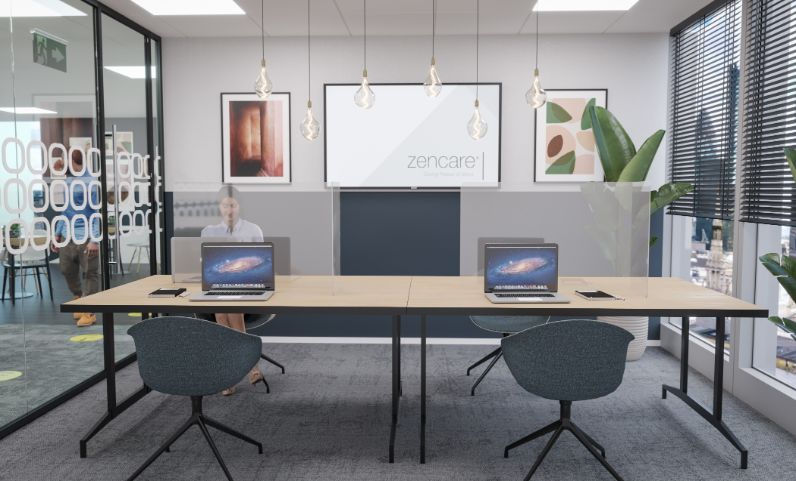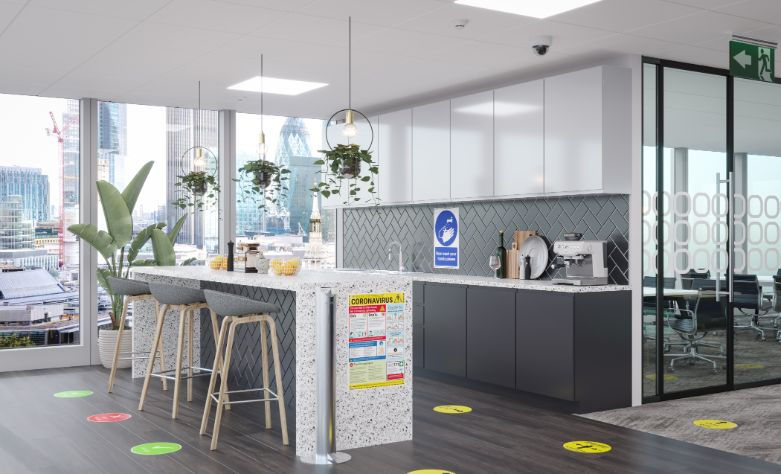Getting your hygiene-anxious team back to work
- Morgan Bush
- Mar 2, 2021
- 3 min read
Updated: Jun 24, 2021
As the world adapts to the Covid-19 pandemic, many organisations are being forced to re-structure their workspace to ensure that their employees remain protected. In April 2019, the British Council for Offices (BCO) published a paper entitled ‘Thoughts on Office Design and Operation after Covid-19’ which considers potential contamination routes.
As a business, it is likely that you are now considering the critical shift to a safe and regulated workspace for you and your staff. It can be a daunting process to ensure that your employees remain safe but by adopting a new organisational framework, you can remain confident that you are taking the appropriate measures.

In order to efficiently utilise your existing space and incorporate essential measures such as social distancing, it may necessitate a re-design or downsizing of your office. As specialists in office re-design, we can assist you with any concerns or requirements that you may have.
A recent study carried out by Harris Interactive on behalf of Kimberly-Clark Professional demonstrated that employee confidence levels remain considerably low with regard to the ‘back-to-work’ transition. Understandably, high footfalls are of great concern due to the government-assigned 'rule of 6’ guideline and how it might extrapolate to the workplace. As a result, numerous companies have introduced hybrid working which combines office working with home-based working. This strategy ensures that footfall within the workspace remains minimal and prevents areas from becoming too populated.
With guidelines in place advising us to wash our hands for twenty seconds at a time, it will come as little surprise that hygiene is paramount in keeping the virus at bay. In the aforementioned study, 70% of employees advised that hand washing and hygiene were considered of the greatest importance and a further 67% stated that they wanted to see cleaning in action for peace of mind.

The condition of the washroom area, quite unsurprisingly, was regarded by 76% of employees as a reflection of an organisation’s hygiene standards as a whole. With this in mind, a regular and high level of cleanliness is essential. It is also good practice to display signage that demonstrates the correct handwashing procedures and reminders to maintain good personal hygiene at all times. Anti-bacterial hand washes and sanitisers should always be available.
In addition to the washroom, the kitchen area should also maintain the aforementioned standards of hygiene. Hand sanitisers, anti-bacterial sprays, handwashes and gels should be available at all times and worktops must be kept clean. Worktops should contain minimal items besides essentials, this will greatly reduce the possibility of transmission.
With 69% of employees stating that social distancing measures should remain strict within their workspace, one-way systems are highly recommended for both internal staff and external visitors. Within the office and communal area, one-way arrows should be employed to avoid unnecessary human interaction. Communal and kitchen areas should also operate at maximum capacity at any one time to avoid overcrowding.
Social distancing pods and panels are effective in designating private working areas and can be utilised in numerous ways. The freestanding partitions can be used as standalone or cover larger areas dependent on requirements, all the while maintaining social distancing measures.

One of the most fundamental treatments for safety is that of decent ventilation; a concept that has presented a concern to humans since the outbreak of 19th Century airborne diseases. In staff occupied areas, poor ventilation will put them at risk by increasing the likelihood of transmission. It is essential to identify the efficacy of your current ventilation and establish whether improvements could be made. Opening windows and airing rooms are basic but highly effective methods of circulating fresh air, mechanical options and air conditioning units are further options that can be explored.
With one in ten businesses now choosing to downsize, it might be the right time for you to consider your own workspace and how you can optimise the area with the necessary safeguarding procedures in place. Social distancing furniture provides the perfect solution; it not only provides barriers amongst staff, but offers the requisite easy-clean surface.
Social distancing is here for the mid-term, certainly, so please get in touch with us to start your office re-design and organisational plan.
Comments